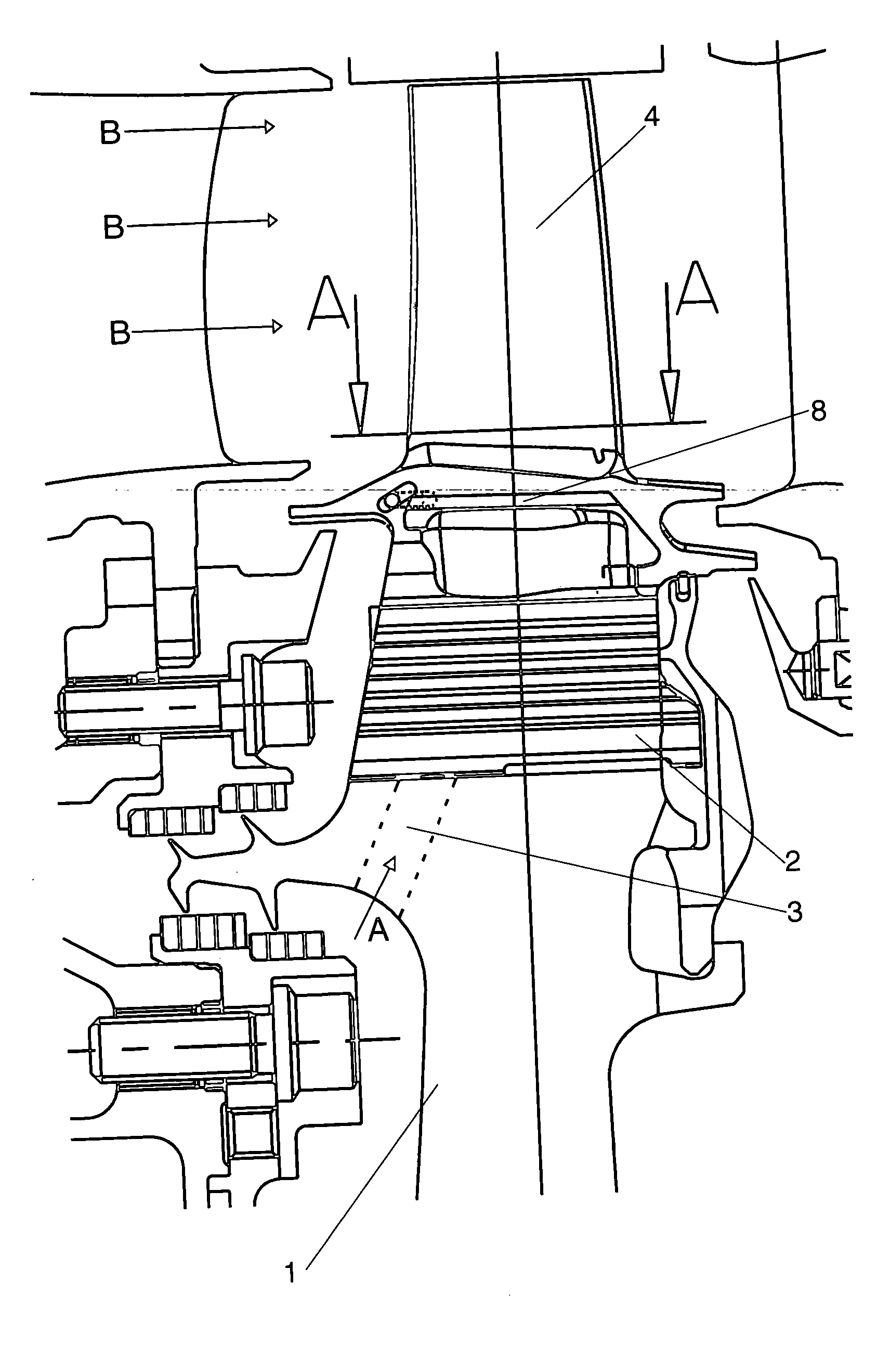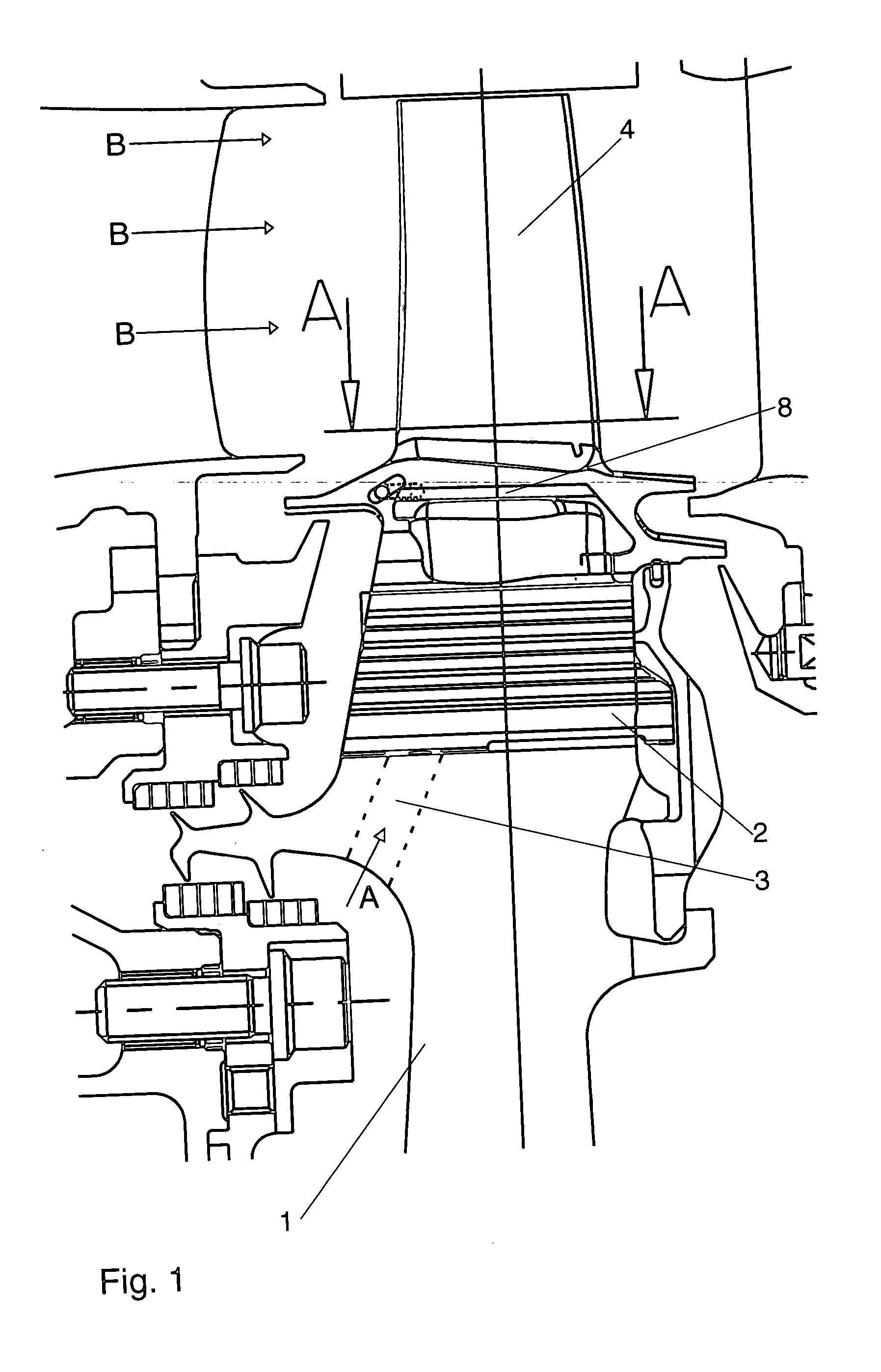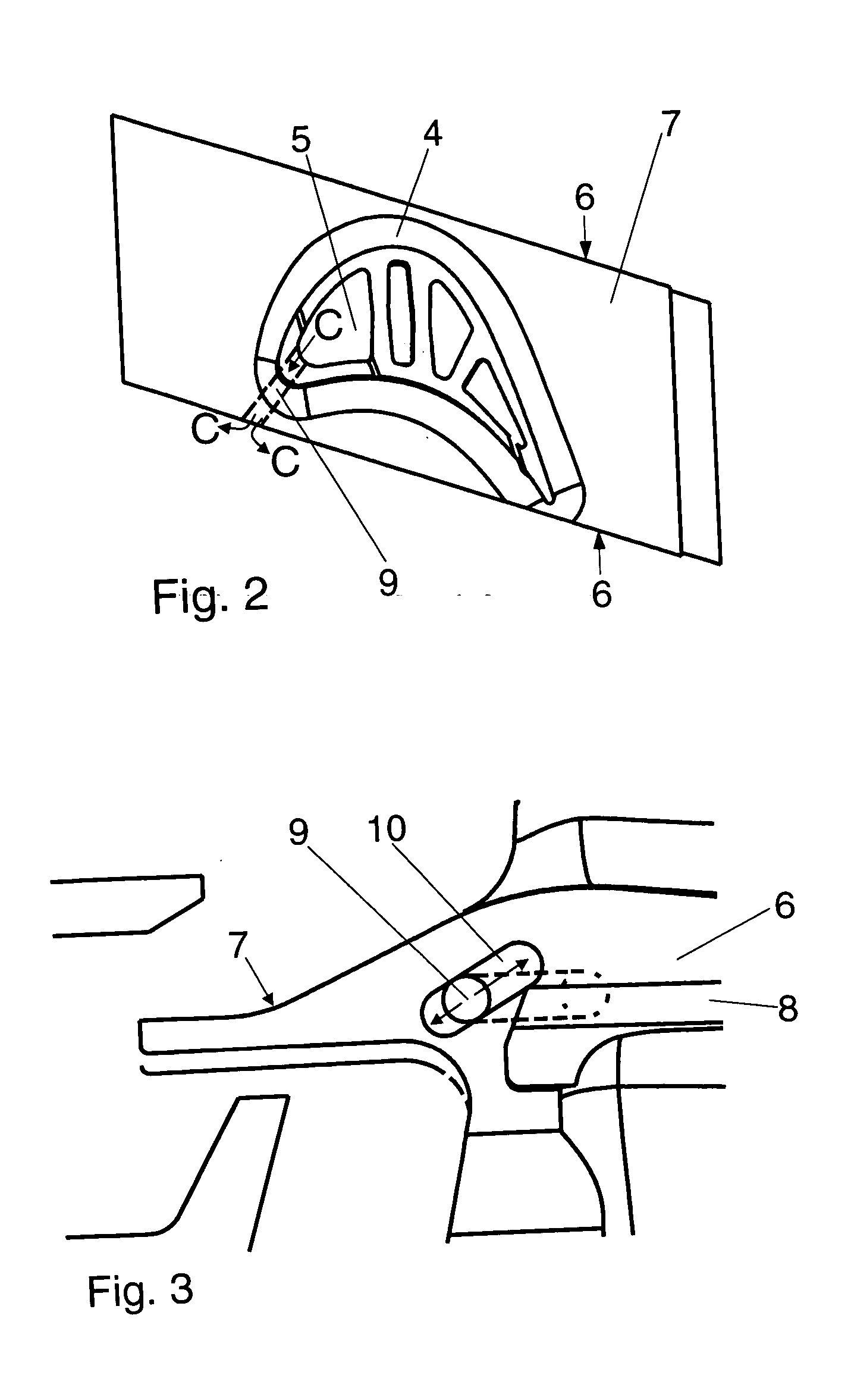Gas turbine rotor
a technology of rotor and gas turbine, which is applied in the direction of marine propulsion, vessel construction, other chemical processes, etc., can solve the problems of reduced service life of the rotor disk and ineffective mechanical sealing, and achieve the effect of enhancing the sealing effect of the latter in a well-controlled manner
- Summary
- Abstract
- Description
- Claims
- Application Information
AI Technical Summary
Benefits of technology
Problems solved by technology
Method used
Image
Examples
Embodiment Construction
[0015] A multitude of turbine rotor blades is separably fitted—via their blade roots 2—in transverse slots (not shown) on the periphery of the rotor disk 1. Cooling air tapped from the compressor (arrowhead A) enters the cavities 5 in the respective airfoil 4 via cooling air holes 3 in the rotor disk 1 connecting to holes (not shown) in the blade root 2. Thus, the airfoil 4, which is subject to the hot gas flow (arrowhead B), is cooled internally and by means of a film cooling. In a mid-area of the side faces 6 of the platforms 7 of the turbine rotor blades, recesses 8 for the accommodation of a sealing and damping element (not shown) are provided. The sealing and damping elements arranged between the opposite side faces 6 of adjacent blade platforms 7 are intended to limit rotor blade vibration and contact of the turbine disk with the hot gas. Subject to the design of the blade platforms 7 and for manufacturing reasons, the arrangement of the sealing and damping element is confined...
PUM
 Login to View More
Login to View More Abstract
Description
Claims
Application Information
 Login to View More
Login to View More - R&D
- Intellectual Property
- Life Sciences
- Materials
- Tech Scout
- Unparalleled Data Quality
- Higher Quality Content
- 60% Fewer Hallucinations
Browse by: Latest US Patents, China's latest patents, Technical Efficacy Thesaurus, Application Domain, Technology Topic, Popular Technical Reports.
© 2025 PatSnap. All rights reserved.Legal|Privacy policy|Modern Slavery Act Transparency Statement|Sitemap|About US| Contact US: help@patsnap.com



